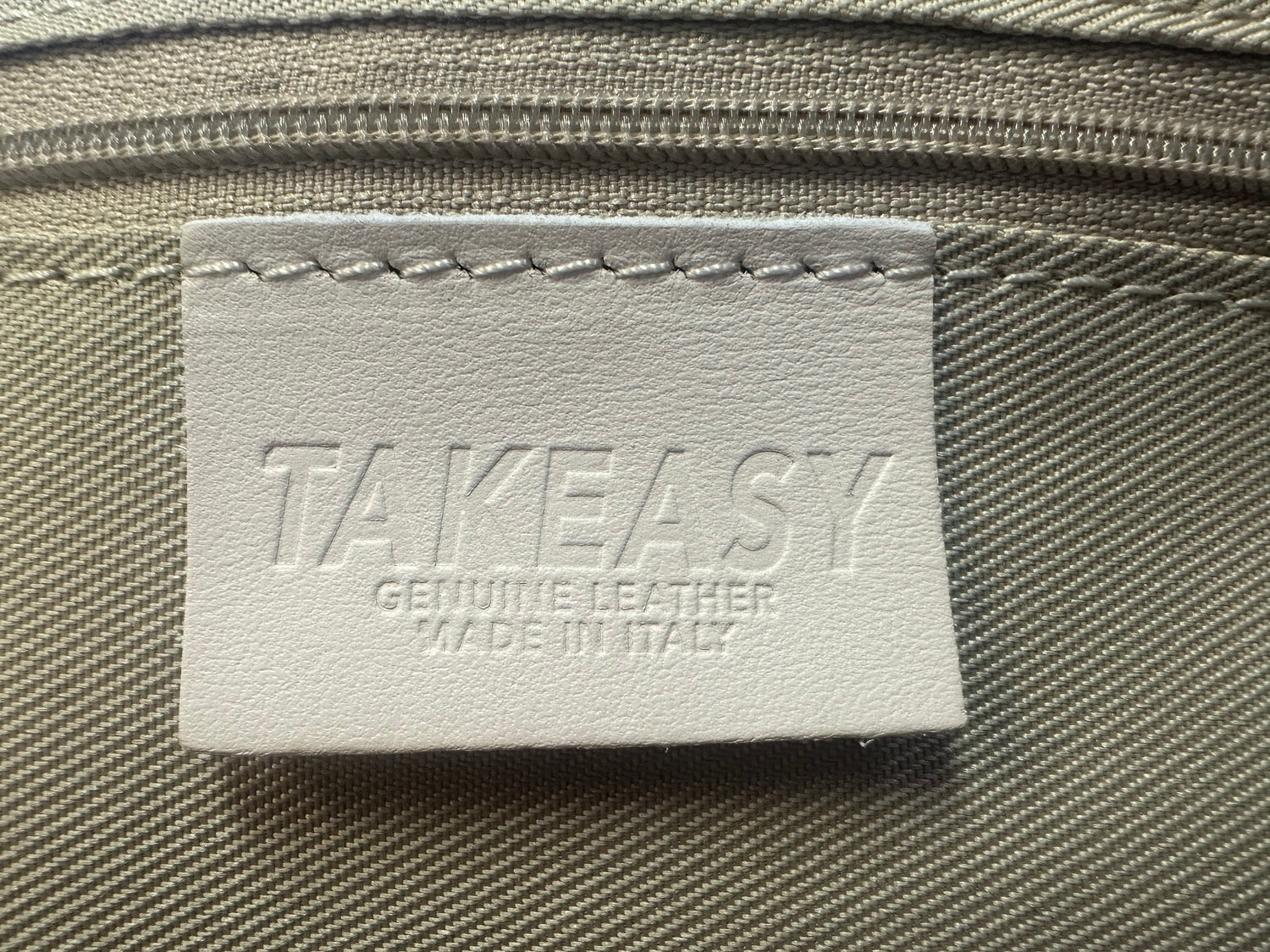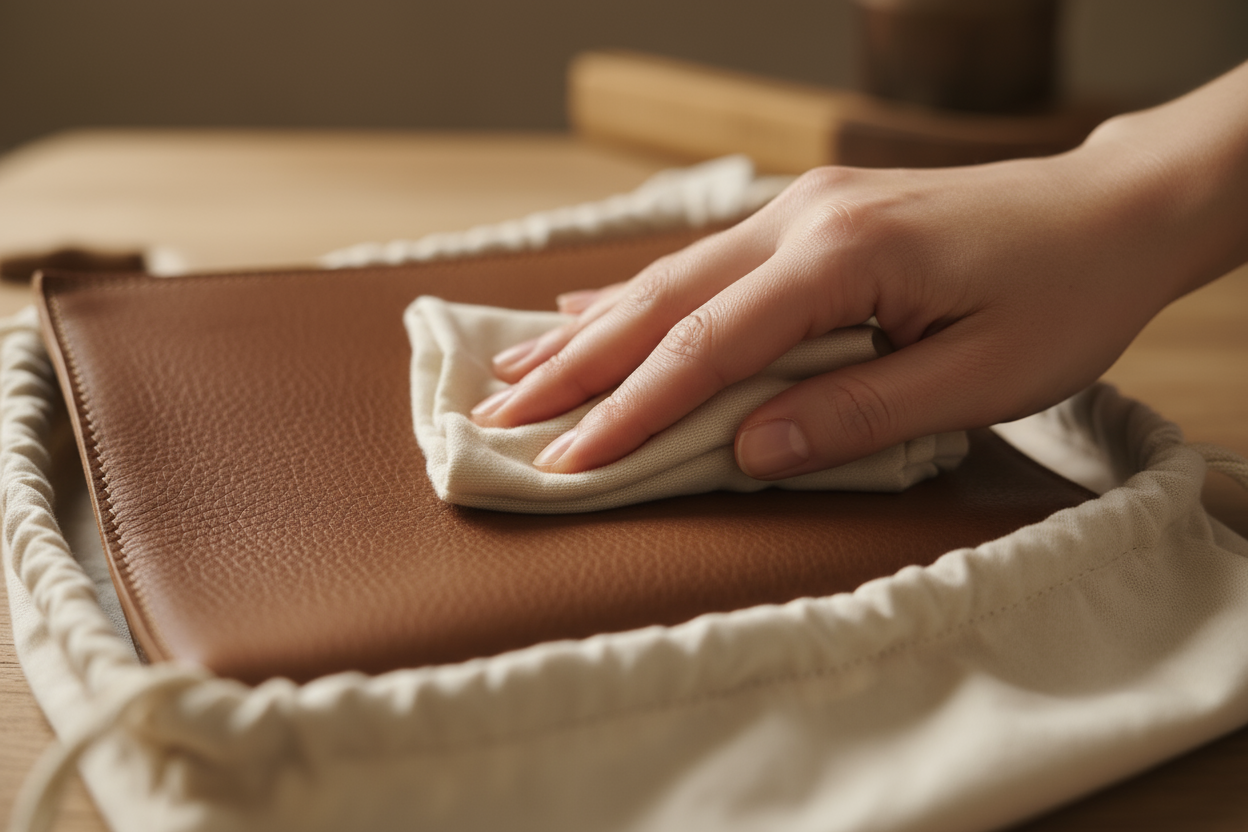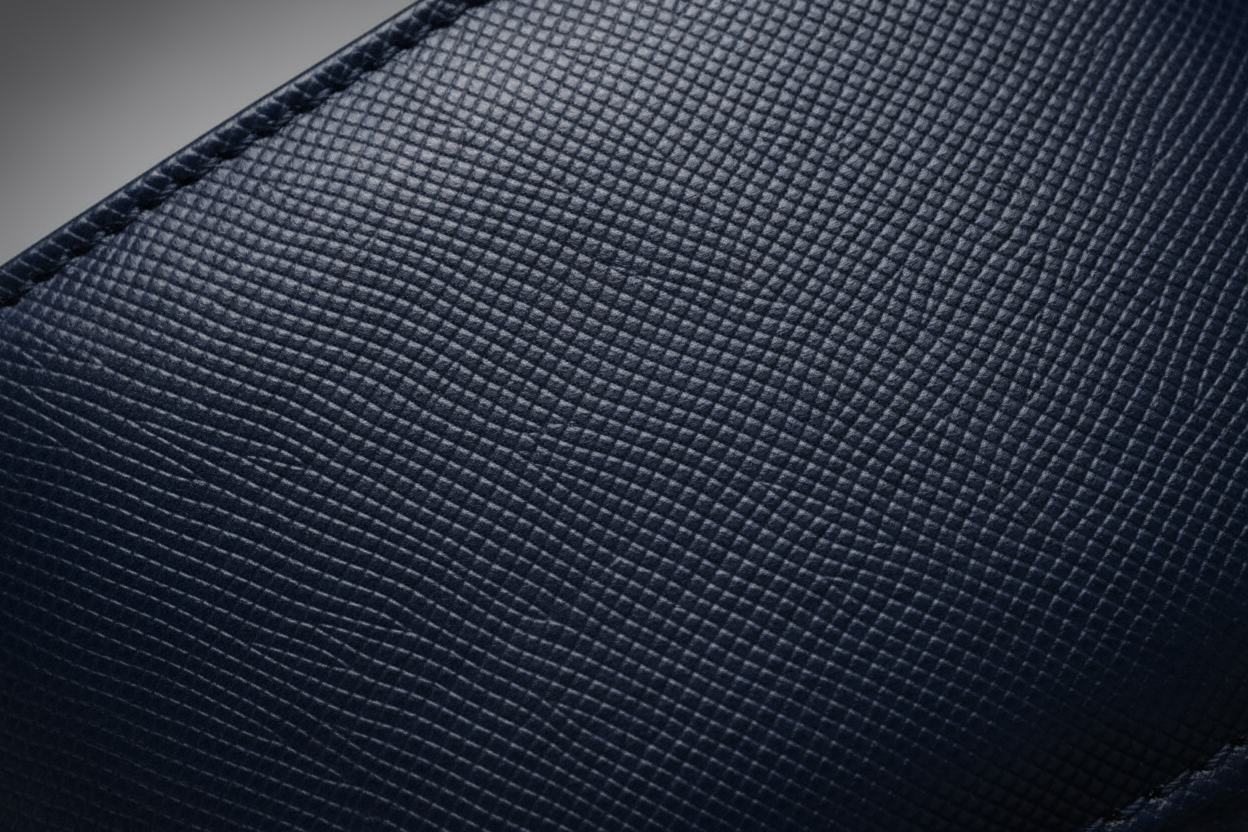Everything You Want To Know
You don’t need to be a leather expert to know what you’re buying.
You don’t need to be a leather expert to know what you’re buying.
This page covers everything you might want to know — from where the bags are made, to how the leather is processed, to what kind of guarantee we offer.
We’ve laid it all out clearly so you can decide for yourself.
From raw leather to finished bag — a look inside our certified Italian workshop.

Do your bags really come from Italy?
Yes, it’s actually made in Italy. No shortcuts, no vague claims.
We work with certified Italian workshops, and each bag includes a “Made in Italy” label sewn directly into the lining — as required by US import law.
We’ve included macro photos of the label so you can see for yourself.

Materials We Use
We use a range of premium Italian leathers, each chosen for its durability, texture, and timeless look.
Most of our bags are made from full grain calfskin or suede — the highest quality part of the hide, known for its strength, softness, and natural finish.
Many styles feature a pebbled texture, which adds a subtle grain to the surface. Pebbled leather is especially practical: it hides scratches better, holds its shape, and gives the bag a more tactile, lived-in feel over time.
Other materials we use include:
Suede with animal-print embossing — featuring subtle python or leopard patterns for a refined, modern look
Suede — soft and velvety, used with internal reinforcement
Metallic-finish leather/suede — bold and reflective, without compromising softness
Woven suede — a richly textured alternative to flat suede
All of our materials are sourced and finished in Italy.

Tanning & Transparency
Tanning is how raw leather becomes durable and wearable — but not all tanning methods are the same.
We use chrome-tanned leather, a modern method that makes the leather soft, flexible, and highly resistant to moisture and color fading.
It’s also the most common method used by Italian tanneries today — for good reason.
While vegetable tanning is often praised as the more “natural” option, it’s also slower, more rigid, and tends to react to water and sun exposure more dramatically.
Our decision to use chrome-tanned leather was simple:
It’s the best choice for everyday bags that need to last, move, and age well — without excessive maintenance.

Everyday Use & Climate Resistance
Our bags are made to be used — not just admired.
The full grain leather we use is naturally durable and treated to resist moisture and color fading, making it suitable for everyday wear, including in humid or rainy climates.
That said, leather is still a natural material, and we recommend basic care:
Avoid soaking it directly in water
Let it dry naturally (never near heat)
Use a neutral leather cream occasionally to keep it supple
You don’t need to baby these bags — but a little care will go a long way.

How to Care for Italian Calfskin Leather
Italian calfskin is one of the finest types of leather, known for its smooth texture and natural durability. With proper care, it can last a lifetime and develop a beautiful patina.
To keep your calfskin bags looking their best:
Avoid excessive moisture: Calfskin is naturally breathable, but it can absorb moisture. If it gets wet, let it air dry naturally (never near a heat source).
Condition occasionally: Use a neutral leather conditioner to maintain suppleness. Avoid oils or dyes, as they may change the color.
Protect from scratches: While calfskin is durable, it’s still sensitive to sharp objects. Store your bag in a soft cloth bag when not in use to avoid unwanted scuffs.
By following these simple care tips, your Italian calfskin bag will remain beautiful for many years.
Leather Terms, Explained
Shop Metallic Leather Bags-
Full Grain Leather
Highest-quality part of the hide, not sanded -
Metallic Leather
A full grain base with a foil finish. Shimmering and bold, but still soft and flexible. Treated to avoid cracking or peeling with wear. -
Pebbled leather
A full grain leather with a raised, textured surface. Soft, scratch-resistant, and keeps its shape beautifully through daily use.
-
Suede
Velvety texture made from the inner side of the hide.
Soft and elegant, but needs a bit more care. -
Woven Suede
Our take on suede with character. Hand-woven texture adds structure and visual interest — still soft, but more dimensional. -
Metallic Suede
Velvety texture meets a metallic overlay — for bags that feel both subtle and striking. Delicate in look, durable in construction.
What Our Leather/Suede Really Looks Like. See the grain, texture, and finish up close — no filters, no tricks.
Certified by Independent Lab
Our leather is tested and certified by a third-party Italian laboratory for quality, composition, and authenticity. Based on these results, we issue a self-declared certificate confirming the use of full-grain Italian leather.

Saffiano Leather — Why We Don’t Use It
Saffiano leather, though popular for its scratch resistance, features a unique textured pattern that is embossed onto the leather. While it offers durability and ease of care, we prefer to focus on full grain calfskin and suede for their ability to develop a rich patina and natural texture.
Our bags are crafted to last a lifetime, and we find full grain leather and suede to be a more authentic and timeless choice for luxury handbags.

Full Grain vs. Top Grain vs. Genuine Leather — What’s the Difference?
When it comes to durability, not all leathers are created equal — and not all “real leather” lasts the same.
Full Grain Leather
This is the strongest and most natural cut. The grain is untouched, which means the fibers stay intact — giving the leather its signature longevity and character. It ages beautifully, developing a rich patina over time.
Top Grain Leather
Slightly sanded or buffed to remove imperfections. Still durable, but a bit less breathable and long-lasting than full grain. It has a more uniform look, which some prefer.
Genuine Leather
While “genuine leather” refers to real leather, it is often made from the lower layers of the hide, which are more processed and less durable than full grain leather.
It is still a good option for products that need real leather but at a more affordable price point.
However, it doesn’t develop the same rich patina or offer the longevity of full grain leather, which we use in our bags for maximum durability and beauty.
For bags that last years — full grain is the gold standard.
That’s why we use it.
Buying Italian Leather Bags: From the US or from Italy?
-
Buying from us
No import duties
Free fast domestic shipping
Easy returns in the US
Same leather, same craftsmanship -
Buying from Italy
Import taxes + customs fees (often 20–30%)
International shipping
More complicated returns
Same leather, same craftsmanship
Everything you wanted to know
And if not — we're always here to answer more.
We built this guide for curious people. For those who care where their bags come from, how they're made, and whether the story is real.
We believe that asking questions means you care — and that's exactly the kind of person we want to design for.
